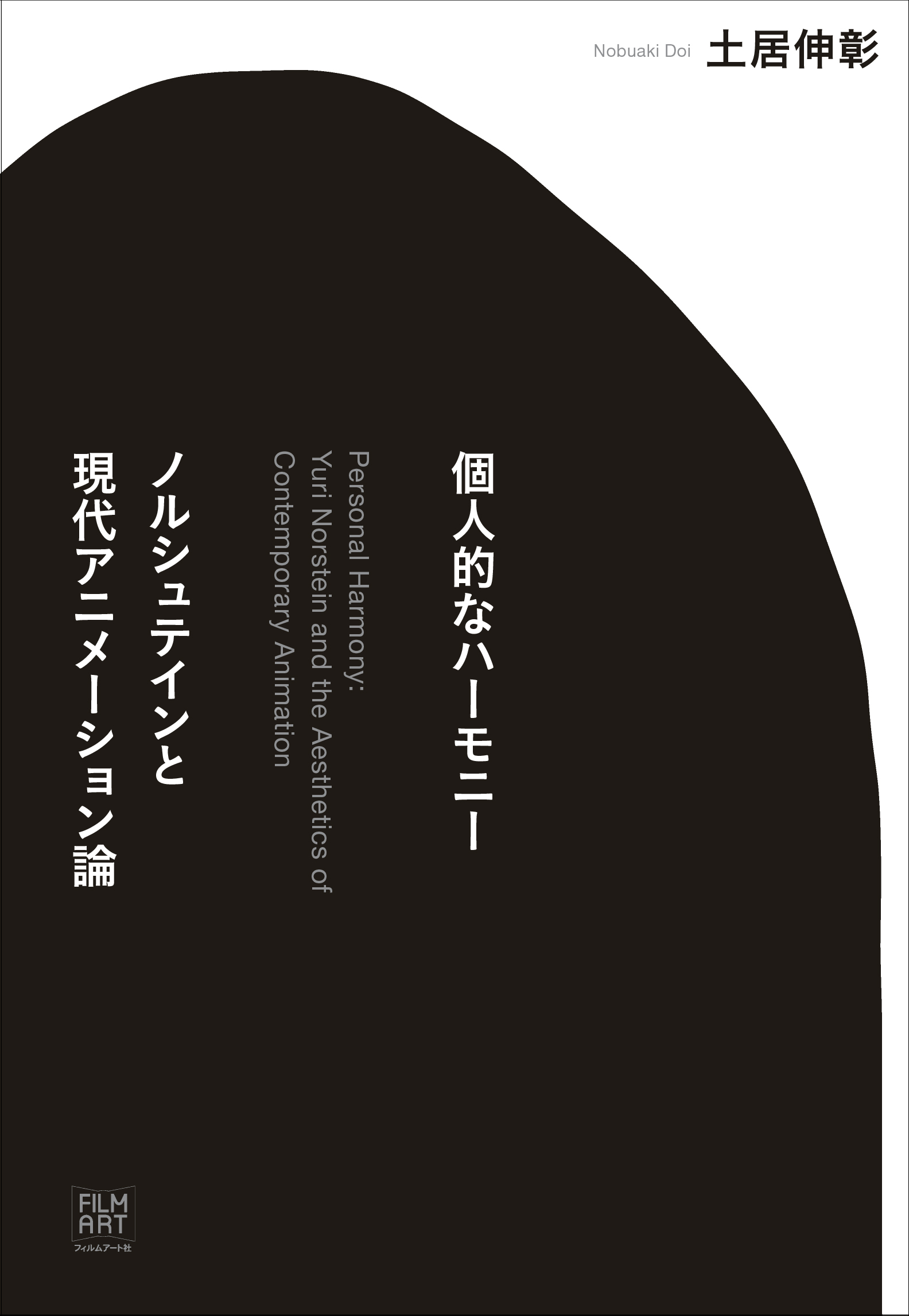
Title
Kojinteki na Harmony (Personal Harmony: Yuri Norstein and the Aesthetics of Contemporary Animation)
Size
400 pages, 127x188mm, hardcover
Language
Japanese
Released
December 20, 2016
ISBN
978-4-8459-1628-3
Published by
Film Art Inc.
Book Info
See Book Availability at Library
Japanese Page
This book is primarily an analysis of the Russian animator Yuri Norstein’s Tale of Tales. In the process, it presents historical sketches and theories related to non-commercial animations created by state-owned studios and independent animators that have often been overlooked in previous animation research.
Littered with fragments of Norstein’s personal history, Tale of Tales is a difficult work for viewers to grasp. This book examines its fluidity of meaning and sense of mystery while referencing diverse events in contemporary animation history in an active effort to achieve a new appreciation for the genre of so-called “alternative” animations that have to date only been discussed as counterpoints to mainstream animation.
This approach has led us to the conclusion that animation is deeply related to the issue of reality. Norstein perceives animation as a portrayal of personal reality, and small, personal realities are what we see in animations created by single individuals and small-scale production enterprises. The strange visuals and narratives of the animator’s personal worldview are likely to shake those of the viewers by compelling them to confront values and ways of thinking that differ from their own. Since the 1990s, this quality of animation as an expression of personal reality has led to the rise of a global genre of animation documentaries portraying hidden realms (finely nuanced realities and inner aspects) that cannot be captured by live-action films.
This book also explores the nature of animation in the digital age by re-examining Sergei Eisenstein’s concept of “plasmaticness” that he asserts is a distinguishing feature of animation. Plasmaticness has long been interpreted as referring to the free fluidity of line and form, but a careful analysis of Eisenstein’s theories suggests that what he is actually saying is that animation is a fluid symbol that can freely change perceptions of reality and meaning. The fluidity of animation affects us, not through its visual images, but through its impact on the brain as we struggle to find meaning in what we are watching. (Norstein points this out, saying that animations are more like literature and theater in their symbolic expression than are live-action films.) Tale of Tales and other animation of the digital era demonstrate through their conscious manipulation of the virtual quality of imagery a fluid reality that belies the existence of any kind of constant reality.
By unraveling the mysterious impressions of Tale of Tales, this book attempts to present a new way of viewing animations. The intimate, personal quality and plasmaticness of animations upset our perceptions of reality, forcing us to grapple with the meaning of life.
(Written by: DOI Nobuaki / December 28, 2020)
Related Info
Japan Society for Animation Studies (JSAS) Award (2017)
https://www.jsas.net/academic-award.html
Related Article:
David OReilly on Tokyo’s Georama, A Different Kind of Animation Festival (Cartoon Brew Feb 23, 2016)
https://www.cartoonbrew.com/festivals/david-oreilly-tokyos-georama-different-kind-animation-festival-137251.html



